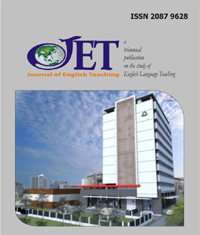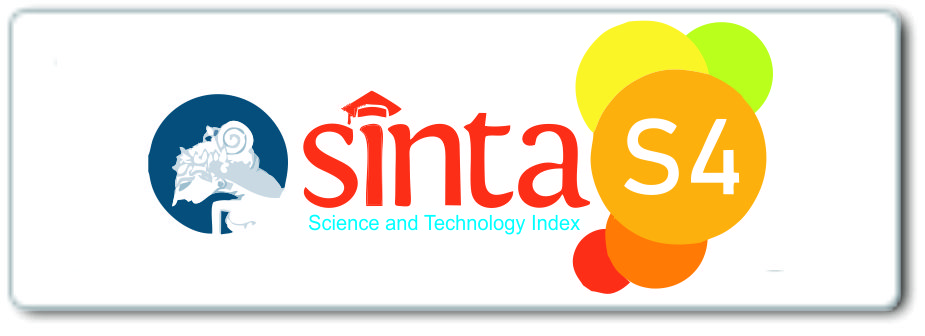Examining Teacher Opinions of Age and Duration of English Language Support in International Schools
DOI:
https://doi.org/10.33541/jet.v8i1.3517Keywords:
EFL Support, International Schools, English-mediumAbstract
International school educators hold various opinions about language acquisition. These opinions are often formed during their training and previous teaching experiences in their home countries. This quantitative cross-sectional survey-based study explored and compared the opinions of 283 English as a Foreign Language (EFL), Primary, and Secondary English teachers in international schools in Africa, Asia, the Middle East, and South America. The study examined the age EFL students should begin receiving EFL teacher support and for how long. The study revealed statistically significant differences between EFL and Primary teachers concerning the age for EFL students to begin receiving support from an EFL teacher. Further revealed were significant differences between EFL and Secondary English teachers concerning the duration of EFL support. Overall, participants' opinions about the duration of EFL support are well below previously reported data, which is troubling since EFL students in English-medium international schools are learning English for academic purposes.
References
Carder, M. W. (1991). The role and development of ESL programmes in international schools. In P. Jonietz & D. Harris (Eds. ), World yearbook of education 1991: International schools and international education (pp. 6-14). Kogan Page Ltd.
Carder, M. W. (2007). Bilingualism in international schools: A model for enriching language education. Vol. 8. Multilingual Matters Ltd.
Carder, M. W. (2011). ESL in international schools in the IBMYP: The elephant under the table. International Schools Journal, 31(1).
Carder, M. W. (2013). Managerial impact on programmes for second language learners in international schools. http://mclanguage. tripod. com
Conger, D. , Gibbs, C. R. , Uchikoshi, Y. , & Winsler, A. (2019). New benefits of public school pre-kindergarten programs: Early school stability, grade promotion, and exit from EFL services. Early Childhood Research Quarterly, 48, 26-35. https://doi.org/10.1016/j.ecresq.2018.10.015
Creese, A. (2005). Teacher collaboration and talk in multilingual classrooms. Multilingual Matters.
Creswell, J. W. (2012). Educational research: Planning, conducting, and evaluating quantitative and qualitative research (4th ed. ). Allyn & Bacon.
Cummins, J. (1981) The role of primary language development in promoting educational success for language minority students. In California State Department of Education (ed. ) Schooling and language minority students: A theoretical framework. (pp. 3-49). Evaluation, Dissemination and Assessment Center California State University
Cummins, J. (2014). Detangling the lies about English-only and bilingual education. In P. C. Gorski and K. Zenkov (Eds. ), The big lies of school reform: Finding better solutions for the future of public education (pp. 53- 65). Routledge
Harper, C. , & De Jong, E. (2004). Misconceptions about teaching English‐language learners. Journal of Adolescent & Adult Literacy, 48(2), 152-162.
Krashen, S. (1981). Bilingual education and second language acquisition theory. In California State Department of Education (ed. ) Schooling and language minority students: A theoretical framework. (pp. 50-79). Evaluation, Dissemination and Assessment Center California State University
Lehman, C. (2020). Parent knowledge and preferences of language learning and use in an international school in Viet Nam. VNU Journal of Social Sciences and Humanities, 6(5), 577-590. https://doi.org/10.33100/jossh6.5.ClaytonLehman
Lehman, C. (2021a). Language-specific professional development: A comparison of for-profit and non-profit International Schools. International Journal of Research in Teacher Education, 12(1), 61-76.
Lehman, C. (2021b). Resources for ELLs in international schools: A non-profit and for-profit comparison. The Universal Academic Research Journal, 3(1), 38-50. https://doi.org/10.17220/tuara.2021.01.5
McHugh, M. L. (2013). The Chi-square test of independence. Biochemia Medica, 23(2), 143-149. https://doi.org/10.11613/BM.2013.018
Sears, C. (1998) Second language students in mainstream classrooms: A handbook for teachers in international schools (Vol. 2). Multilingual Matters.
Sears, C. (2015). Second language students in English-medium classrooms: A guide for teachers in international schools (Vol 20). Multilingual Matters.
Sharpe, D. (2015). Chi-square test is statistically significant: Now what? Practical Assessment, Research, and Evaluation, 20(1), 8. https://doi.org/10.7275/tbfa-x148
Strickland, D. , & Riley-Ayers, S. (2006). Early literacy: Policy and practice in the preschool years. National Institute for Early Education Research.
Thomas, W. P. , & Collier, V. P. (1997). School effectiveness for language minority students. NCBE Resource Collection Series. National Clearinghouse for Bilingual Education, The George Washington University.
Thomas, W. P. , & Collier, V. P. (2002). A national study of school effectiveness for language minority students' long-term academic achievement. Center for Research and Education, Diversity and Excellence.
Downloads
Published
Issue
Section
License
Copyrights for articles published in JET are retained by the authors, with first publication rights granted to the journal. The journal/publisher is not responsible for subsequent uses of the work. It is the author's responsibility to bring an infringement action if so desired by the author.





